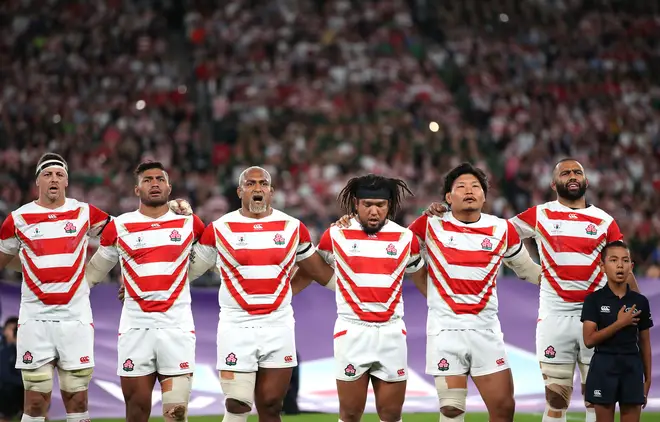On Air Now
The Classic FM Hall of Fame Hour with Tim Lihoreau 9am - 10am
26 July 2023, 11:31

We explore the origins and history of ‘Kimigayo’, one of the world’s oldest and shortest national anthems.
Japan has one of the oldest national anthems in the world.
‘Kimigayo’ is the country’s single-verse national anthem, based on the words of a classical Japanese waka poem written by an unknown author during Japan’s Heian period (794–1185).
As well as being one of the oldest known national anthems, it is also the world’s shortest, standing at just a single verse.
Read more: The world’s best national anthems
May your reign
Continue for a thousand, eight thousand generations,
Until the tiny pebbles
Grow into massive boulders
Lush with moss
君が代は
千代に八千代に
細石の
巌と為りて
苔の生すまで
Kimigayo wa
Chiyo ni yachiyo ni
Sazare-ishi no
Iwao to narite
Koke no musu made

Airi Suzuki - Japanese National Anthem (Rakuten SUPER Nighter) 2018.5.24
The melody for the Japanese national anthem today uses music composed by court composers Yoshiisa Oku and Akimori Hayashi, arranged by the German composer Franz Eckert in 1880.
Before ‘Kimigayo’ was completed, and adopted as Japan’s official anthem in 1888, a different melody had been proposed by Irish musician John William Fenton, who led a military band in Japan at the start of the Meiji period. Fenton’s version proved unpopular, so was never officially adopted.
‘Kimigayo’ with Eckert’s arrangement was the country’s official anthem until 1945, and even once parliamentary democracy was installed in the country following the Second World War, it remained in place as the de facto anthem when Emperor Hirohito was allowed to remain on the throne.
When Japan passed the Act on National Flag and Anthem in 1999, ‘Kimigayo’ once again became enshrined as the country’s official national and imperial anthem.
Read more: What is the national anthem of China, and what are the lyrics in English?

The title of the anthem is usually translated as ‘His Imperial Majesty’s Reign’ and the short hymn really is about the worship of Japan’s emperor, wishing their reign to be a long and prosperous one.
As a result, it’s shrouded in controversy. Many in Japan and other Asian countries raise an eyebrow at the song’s association with militarism, and the virtual worship of the emperor encouraged by its lyrics.
As well as international sporting events like the Olympics, the song is used in schools and the Japanese government’s enforcement of teachers to respect the national anthem and flag of Japan has attracted controversy in recent times.
Teachers in Hiroshima in 1999, Osaka in 2010, and more widespread in 2011 and 2012 staged rebellions in which they refused to display the song or sing it, in spite of an order that teachers must respect the national song and flag in schools, or else risk losing their jobs. However, teachers unions and subsequent court proceedings have quashed any demonstrations against ‘Kimigayo’, deeming use of the song in schools as constitutional.